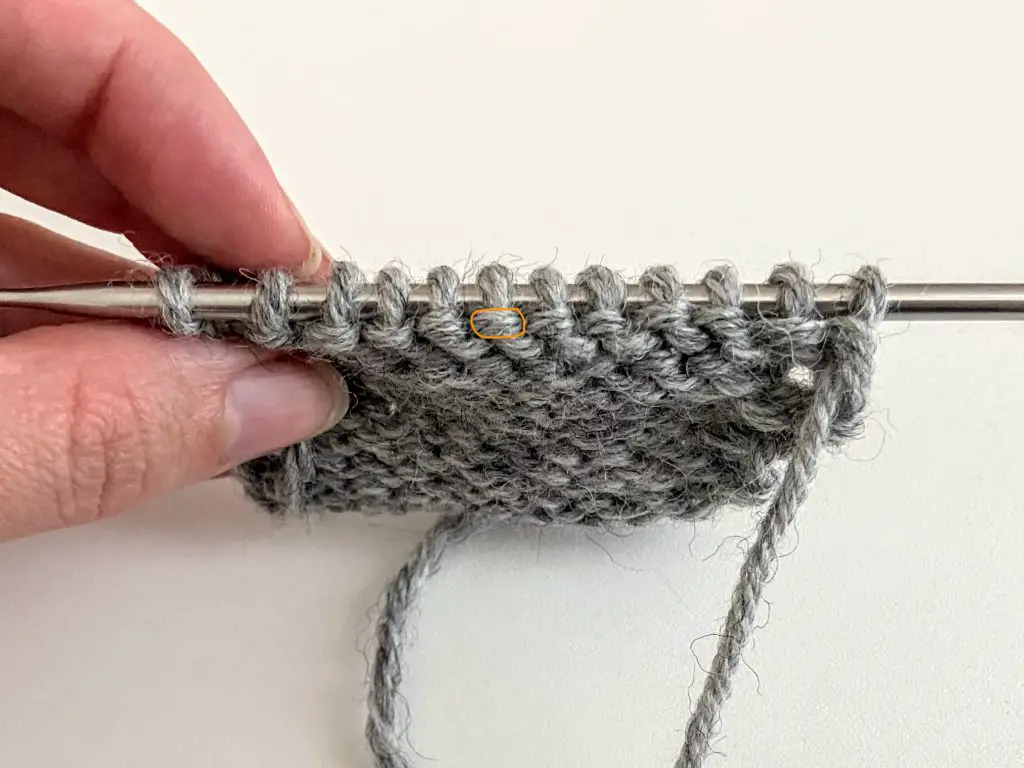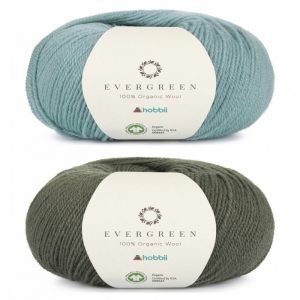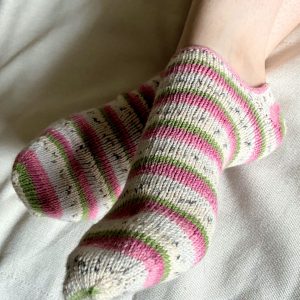There are two basic stitches in knitting: the knit stitch and the purl stitch. After you master these two stitches you can make many of the basic knitted fabrics such as stockinette, moss stitch and ribbing.
What’s the difference between a knit and a purl stitch?
The knit stitch is actually the opposite of the purl stitch meaning that if you knit a stitch and turn your work it’s a purl stitch on the other side.
To give you a concrete example let’s take a look at the stockinette stitch which is the basic knitted fabric in most commercial clothes. The side with knit stitches is called the right side (RS) and the side with purl stitches is called the wrong side (WS). You can make stockinette by knitting all the stitches on the right side and purling all the stitches on the wrong side. If you work in the round you have always the right side of the work facing you and that’s why you can just knit all the stitches. However, if you work your piece flat (back and forth) you need to purl all the wrong side rows and knit all the right side rows.


The knitting abbreviation for the knit stitch is k. For instance, k5 means knit 5 stitches.
The most commonly used knitting symbol for a knit stitch is a square.

The three ways to make a knit stitch are listed below. The methods differ in 2 ways:
- On which hand you hold the working yarn.
- How do you tension the yarn.
As a beginner which style should I learn?
I will highly recommend you to try to learn first the Norwegian way to knit as it’s the most ergonomic.
Use the English style only if the two other styles feel too difficult.
1. English Style
In English knitting (also known as right-hand knitting or throwing) you hold the yarn in your right hand and the stitches you are going to work next are in your left hand.
This is the slowest method of making a knit stitch and I would recommend you to try the Norwegian or Continental style knit stitch first. If they feel too difficult to learn then try this one.
2. Continental Style
In the Continental style, you hold both the yarn and the stitches you are going to work next in your left hand. In this way, it’s much easier to hold even tension and you can significantly speed up your knitting.
3. Norwegian Style
This is the style I have been taught at school here in Finland. Similar to the continental style you hold both the yarn and the needle with the stitches in your left hand but you try to keep your movements as relaxed and minimal as possible.
I find this method of knitting very ergonomic as there’s no wrapping the yarn around your fingers. Instead, you can keep them relaxed and make the needles do all the work for you. The yarn just rests on top of your index finger.










